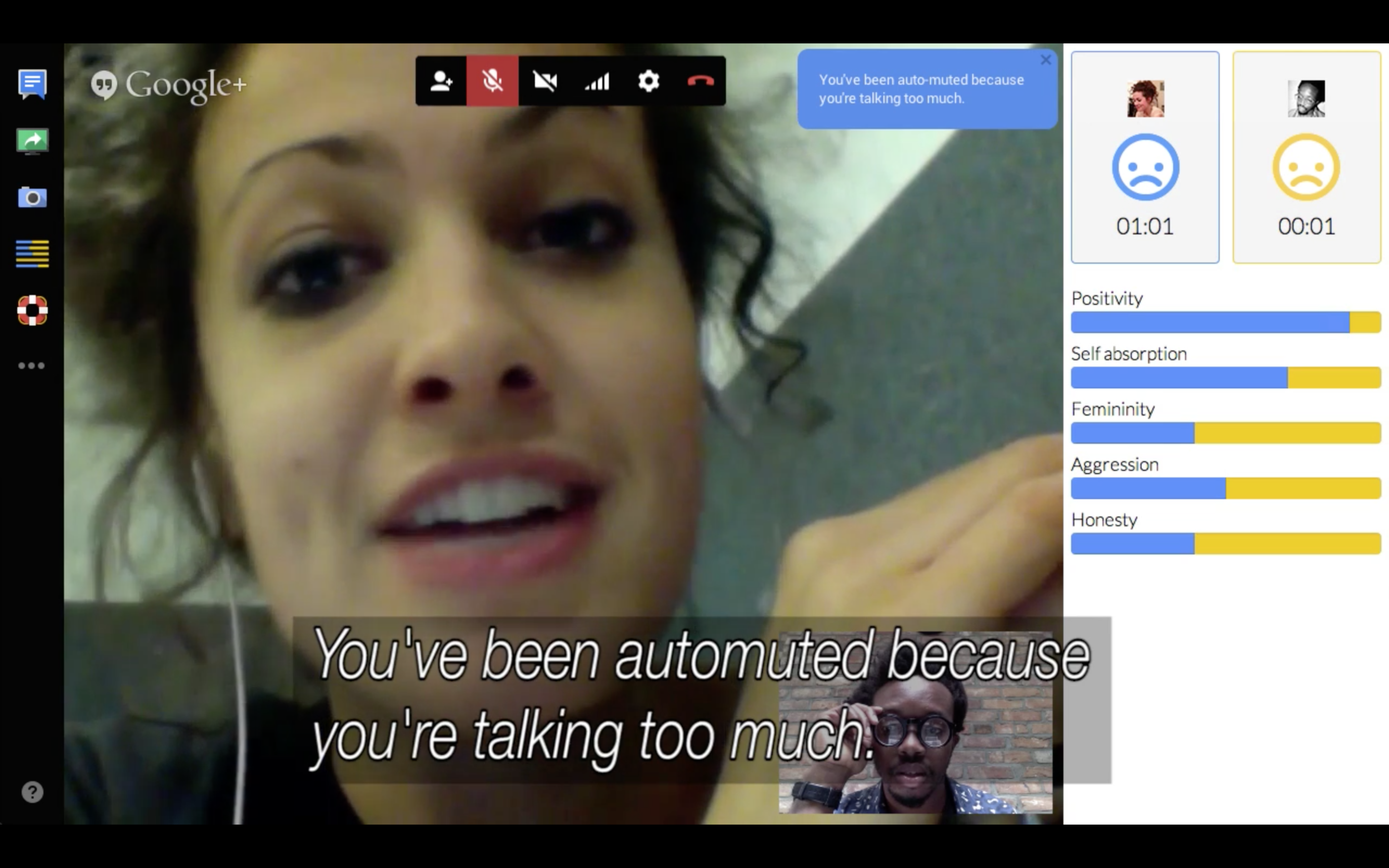The Artvertiser
Julian Oliver, one of the authors of The Critical Engineering Manifesto, has long been concerned with channels of information distribution and how they can be manipulated. He has explored this theme through many different means, but with The Artvertiser he uses augmented reality in order to subvert a form of information manipulation that is so often overlooked because of its abundance: advertising.
Created in 2008 in collaboration with Damian Stewart, The Artvertiser consists of a pair of binoculars with custom software that allow them to identify advertisements in their environment and overlay the ads with artwork instead. The images displayed can be uploaded to the device, allowing for the art shown to be completely self-selected. Built with a stark, white and black exterior, the binoculars look like a prop from a time traveling film made in the eighties. A vision of a future that was never seen. However, Julian does not want the software to be limited to just his custom built binoculars; he imagines that it could be implemented on any device capable of handling augmented reality. Whether it be a smartphone or devices like Microsoft’s HoloLens, they could be used to take an advertisement heavy area like the New York Time’s Square and turn it into a veritable museum. It is also designed to work with magazines or ads printed onto the sides of moving cars.
While it is an object that is simple enough to describe, its implications are significantly more vast. Some of the discussions it brings up include the idea of voluntarism. None of us agree to be exposed to the ads placed everywhere around cities. From the billboards and giant posters placed on walls to smaller printed paper flyers stapled to telephone poles, pedestrians are forced into becoming an audience simply through proximity and sight. This piece of engineering the ability to choose what is seen. As it was written about on the Archive for Digital Art:
““An instrument of conversion and reclamation, The Artvertiser situates the ‘read-only’, proprietary imagery of our public spaces as a ‘read-write’ platform for the presentation of non-proprietary.””
If people don’t want to have another slogan or product shoved down their throats, they can instead exist in a world curated by their own personal art tastes. It returns to them dominion over what content they consume.
In some ways this piece is similar to an augmented reality art piece called Lapse by Ivan Toth Depeña. This was a project from 2016 wherein Depeña used augmented reality in order to create virtual art that could be seen around Miami, in and amongst the city. Both Lapse and The Artvertiser use technology to bring art into a new space; it is freed from the museums to which it is so often confined and instead plastered across the cityscape. However, they come from very different drives. Lapse has a focus on bringing art in the city in order to connect the community and atmosphere of specific places to a piece of art, and thereby grant it depth and connection to the community. The Artvertiser is much more focused on removing unwanted content rather adding to the richness of an area. This just begs the mind to imagine a way to combine the two to make it so that it isn’t only returning voluntarism to the casual city dweller, but also invites them into a conversation that can connect them to the surrounding community.
Inevitably, this sort of device would also force advertisers to become more creative. It would shift the power balance between the advertiser and the advertisee. Where they were once able to rely on placement, now they have to focus on content, producing the sorts of ads that consumers actually would enjoy to experience. Granted, they could do this by implementing some sort of reward system for viewing their ads, but Nike is exploring another option. Nike worked with a London based group called Field in order to create an interactive ad entitled Force of Nature. The installation centered around a treadmill on which the participant would run. Projected in front of them is a portrait of themselves, but with an interactive component. It uses the speed and foot pressure of the runner in order to distort the projection, transforming the runner’s body into a mesmerizing display of color and movement. This is a new step in advertising because rather than just subjecting their audience to the advertisement, they have instead created an advertisement that attracts people because they want to experience it. So, if something like The Artvertiser were to become common in everyday use, more companies would have to rely on creative experience driven installations like this one.
While from a conceptual perspective The Artvertiser brings up many more conversations than those that have been touched on here, it is also impressive from the engineering side. Julian built this device using custom open source software, and it stands as a testament to the extent of what can be done outside of the confines of large software companies. Even though he built it at a time when most of the mainstream computer industry was just beginning to dabble with augmented reality, he was already using it in a very applicable way. It’s an inspiration to creators and coders everywhere, displaying the sorts of cutting edge projects that can be created by an inspired tinkerer; not just using and adopting a new technology, but leading the charge into its development and application.
Links:
- http://theartvertiser.com/
- https://antiadvertisingagency.com/the-artvertiser/
- https://www.digitalartarchive.at/database/general/work/the-artvertiser.html
- https://transmediale.de/artvertiser
- http://rhizome.org/editorial/2012/sep/5/artist-profile-julian-oliver/
Lapse:
- http://www.designboom.com/technology/nike-force-of-nature-05-20-2015/
- https://www.psfk.com/2015/05/nike-treadmill-experience-force-of-nature-interactive-exhibition-field.html
Force of Nature:







